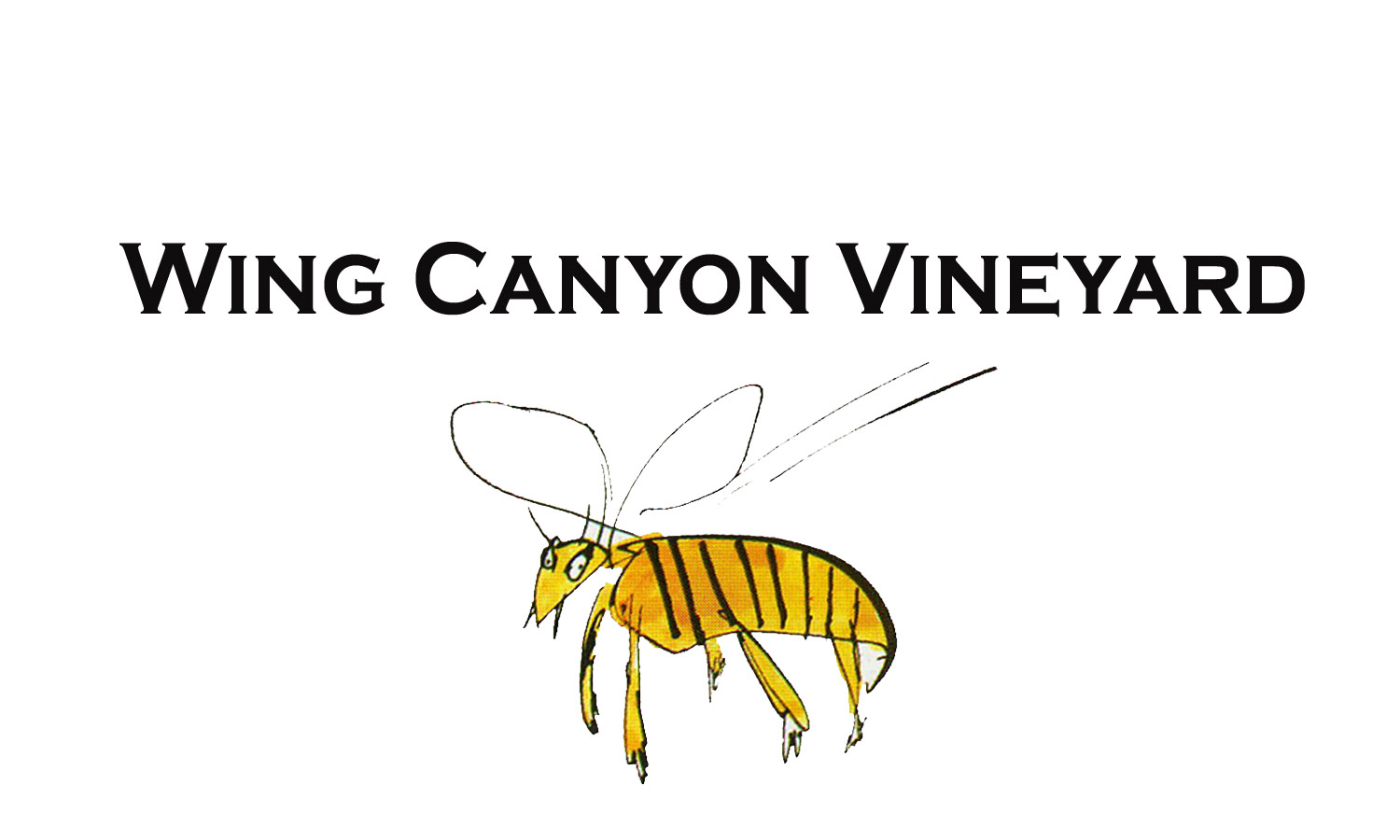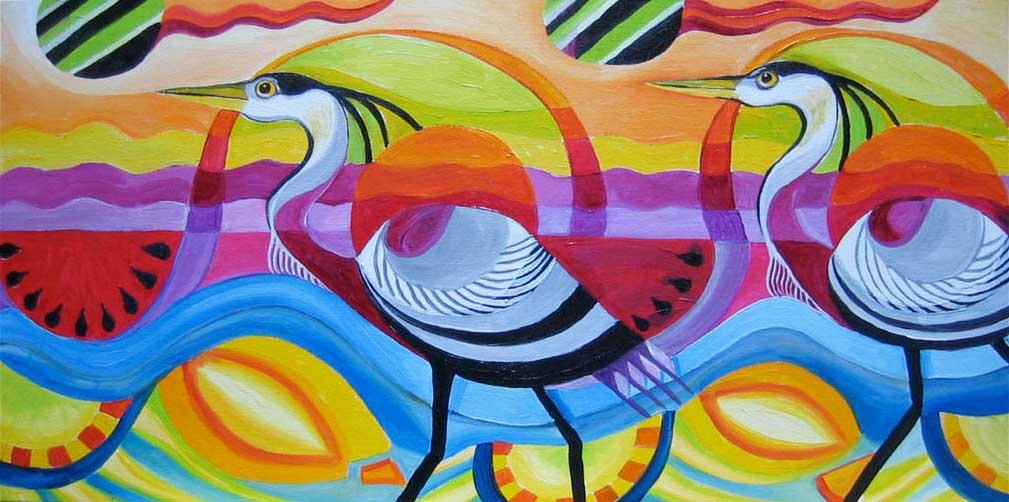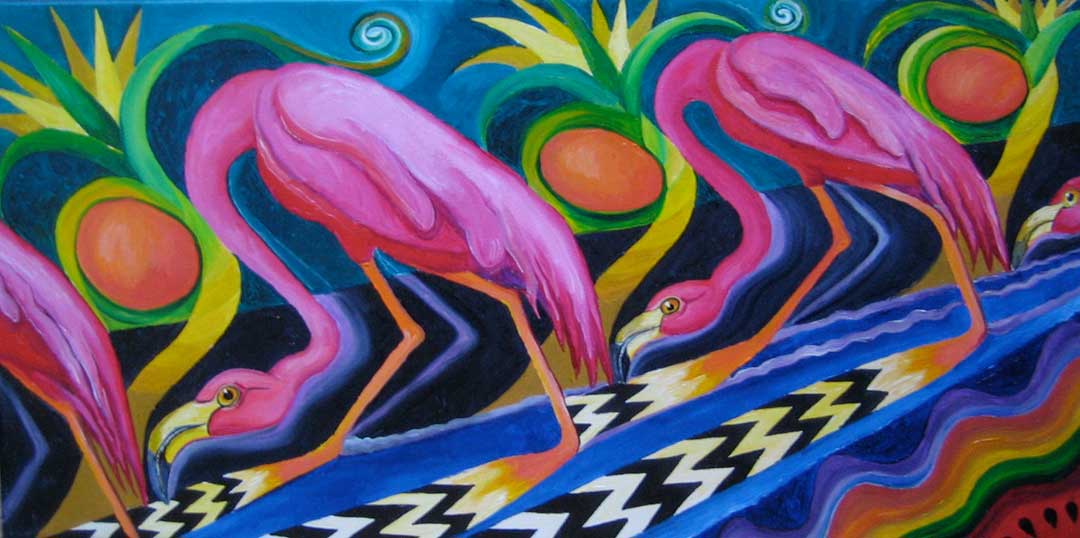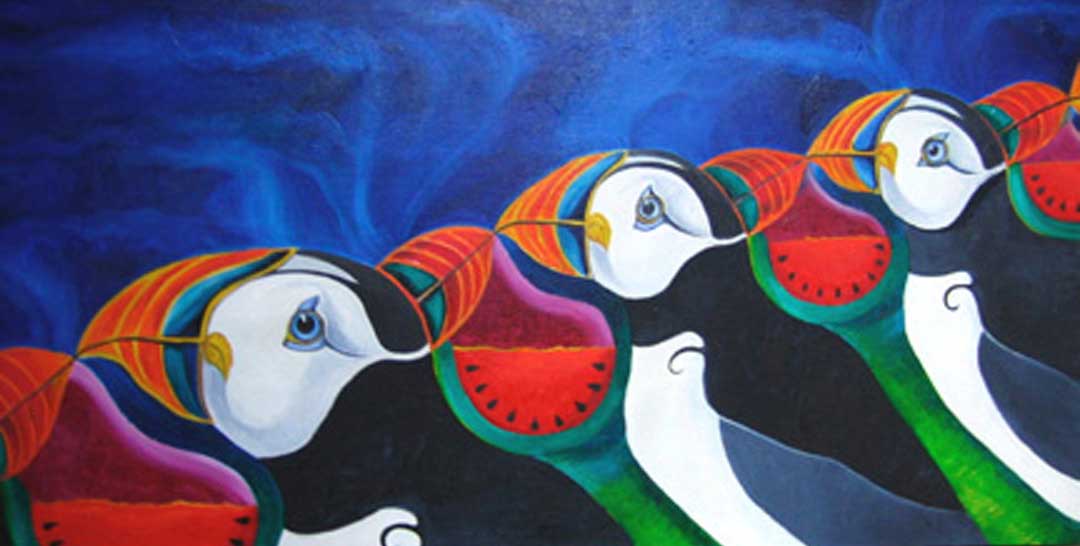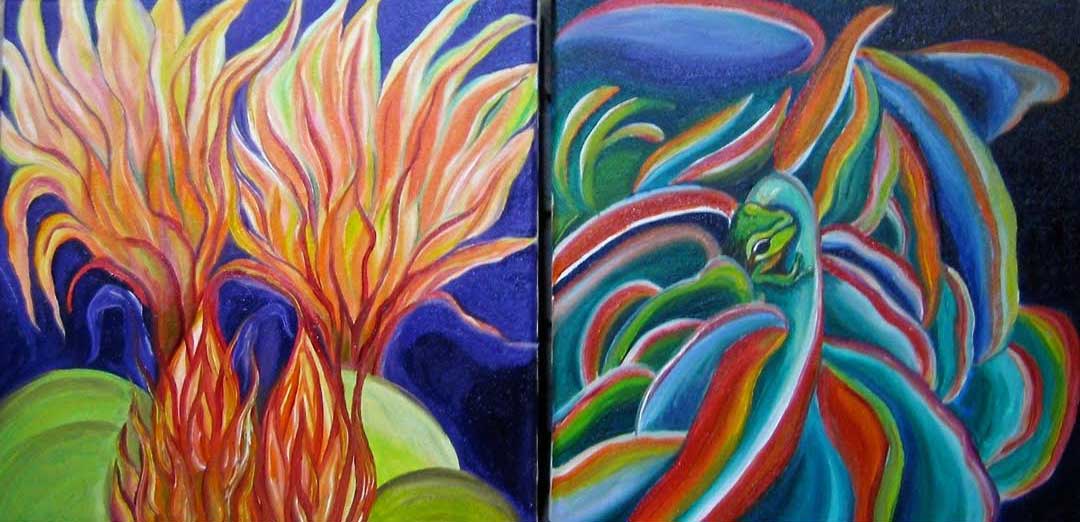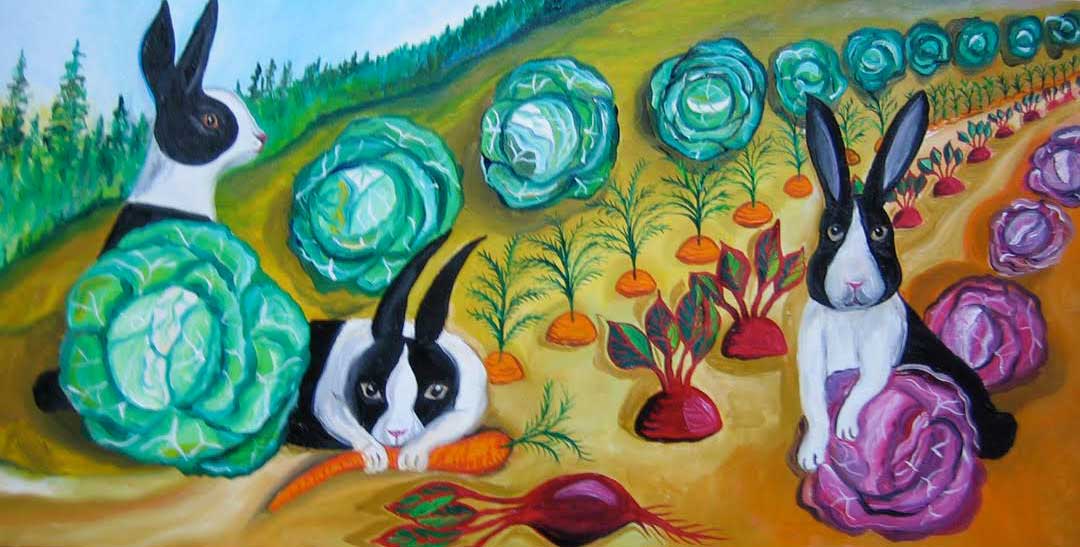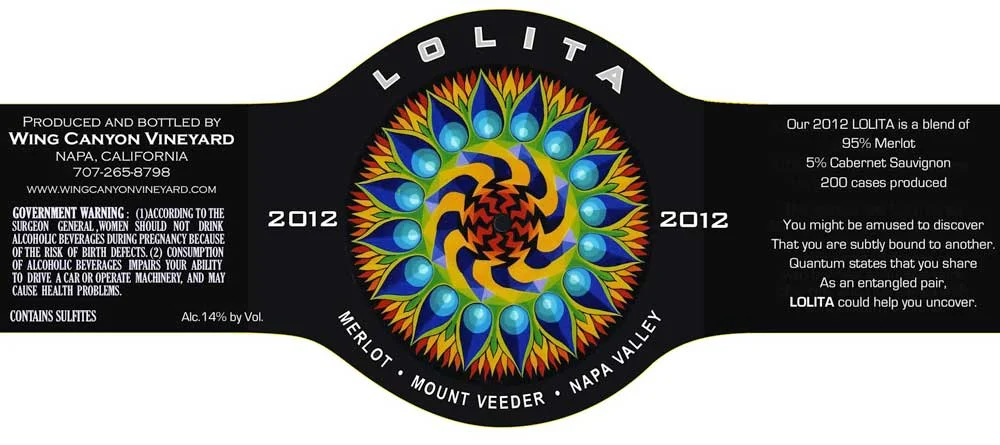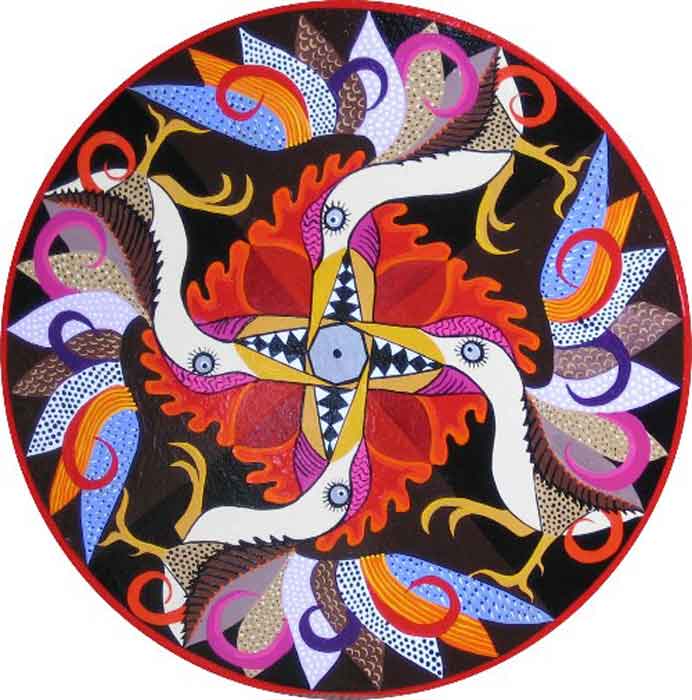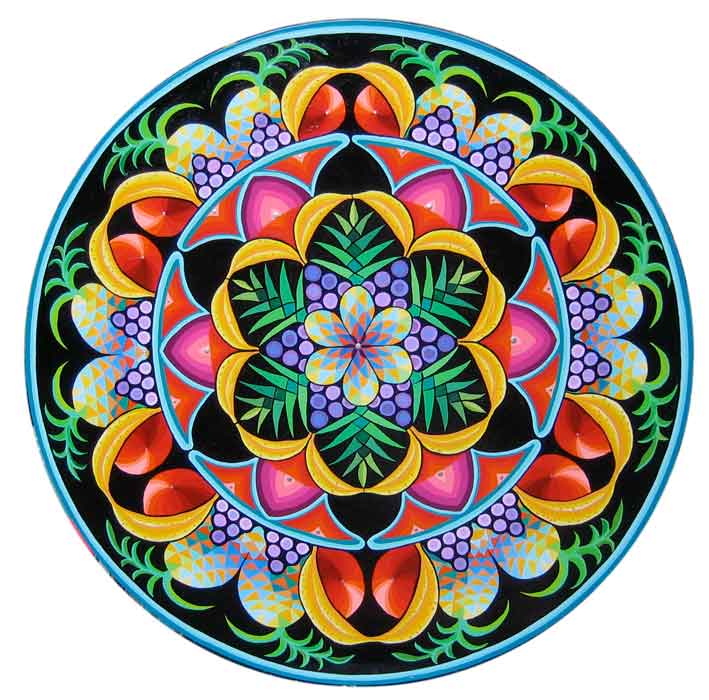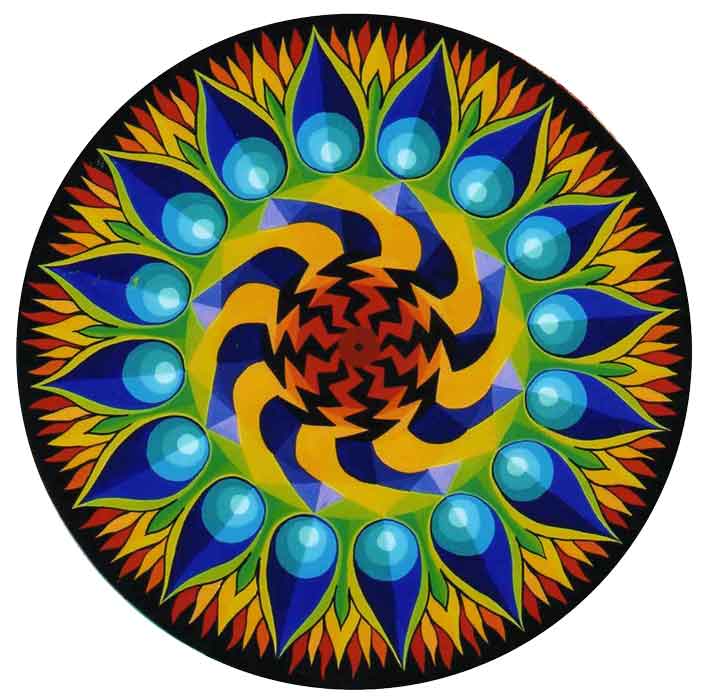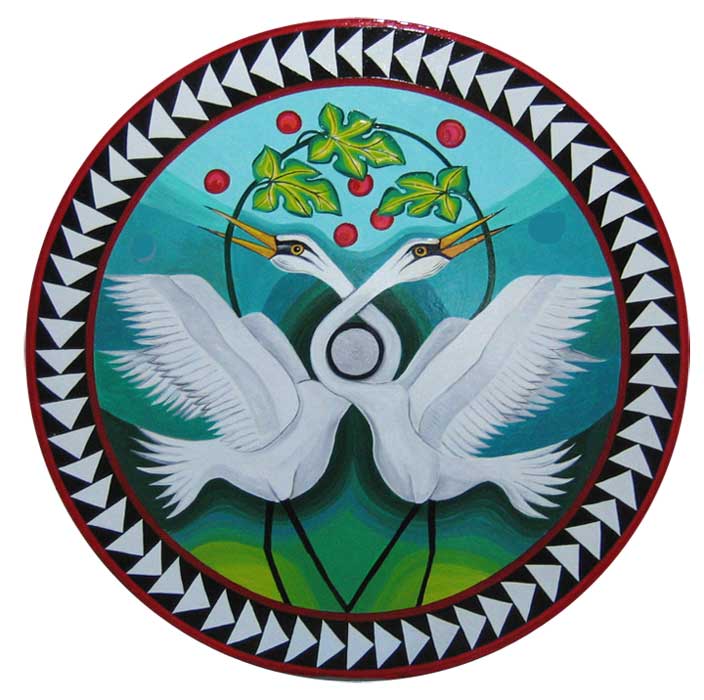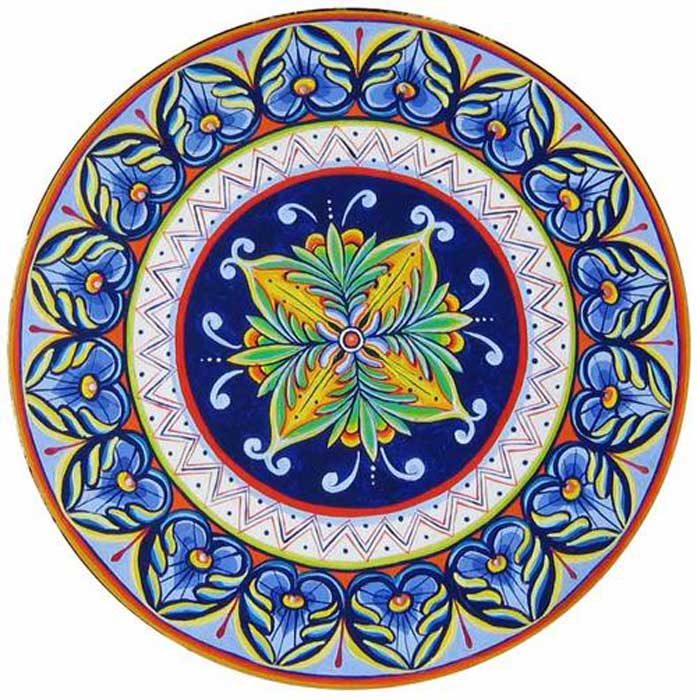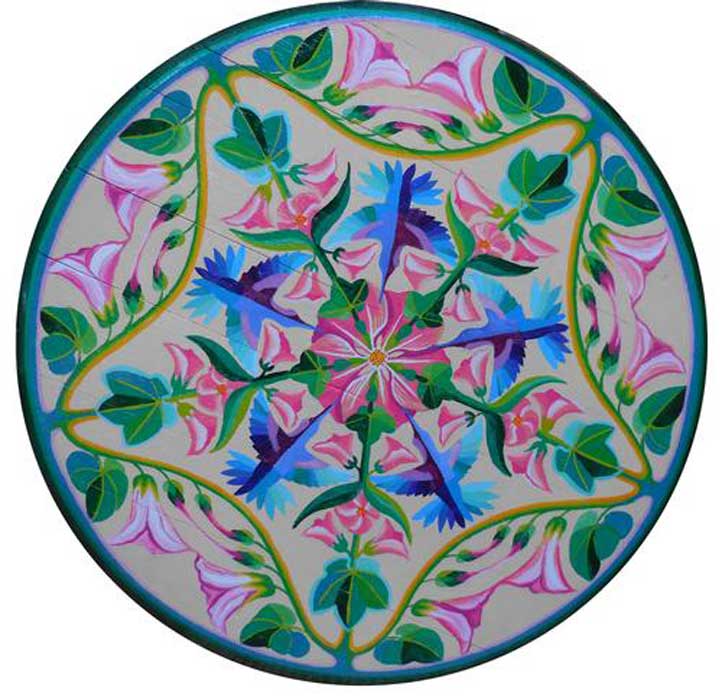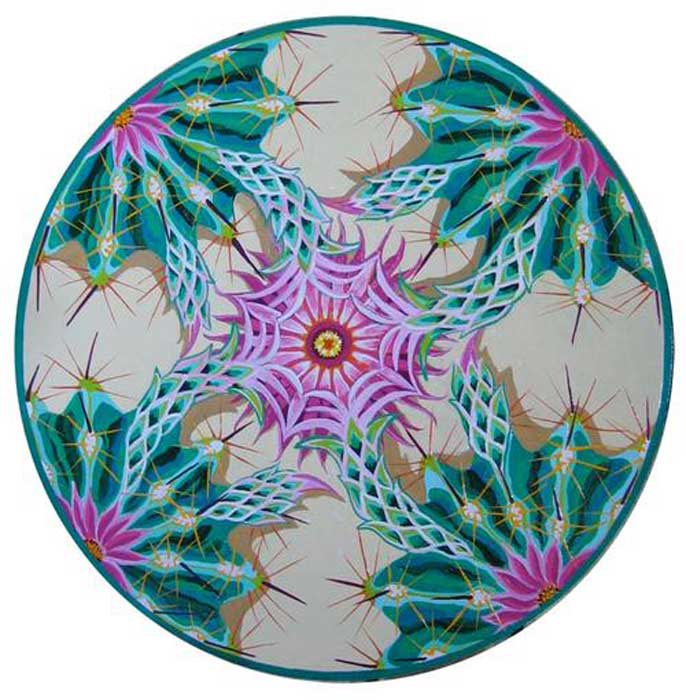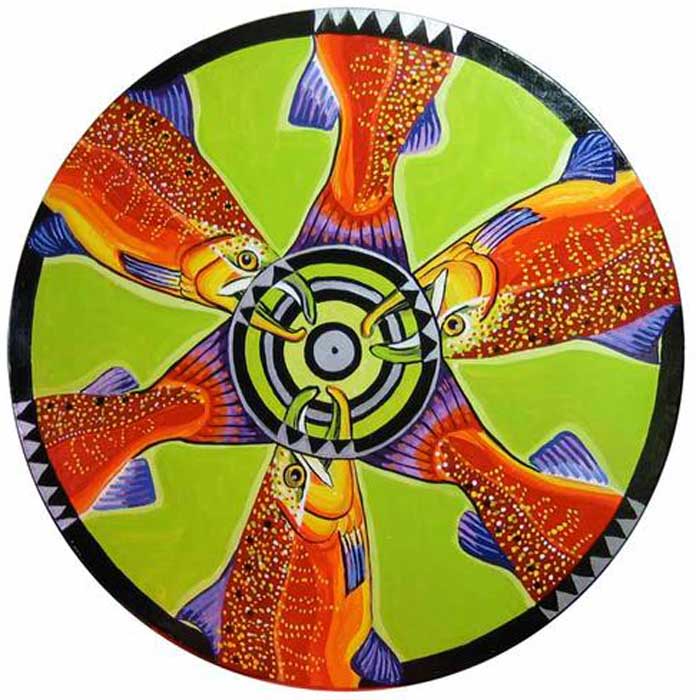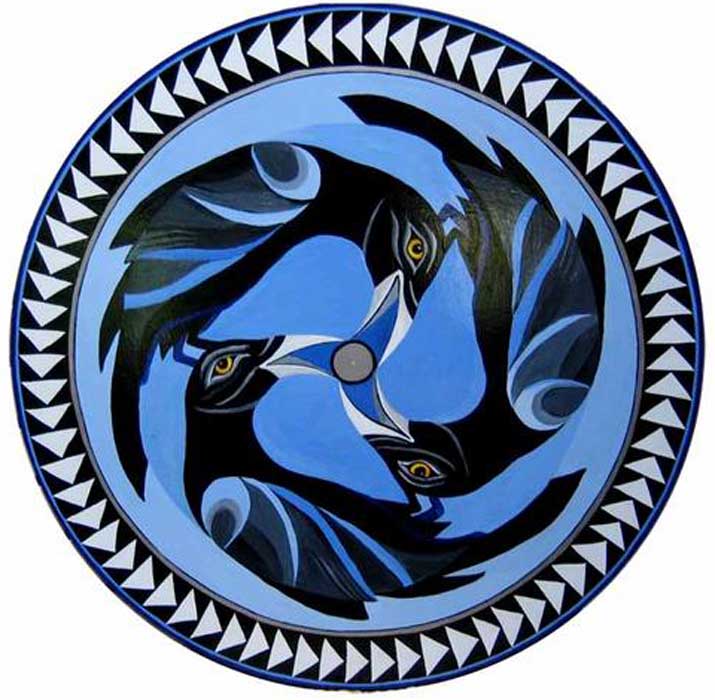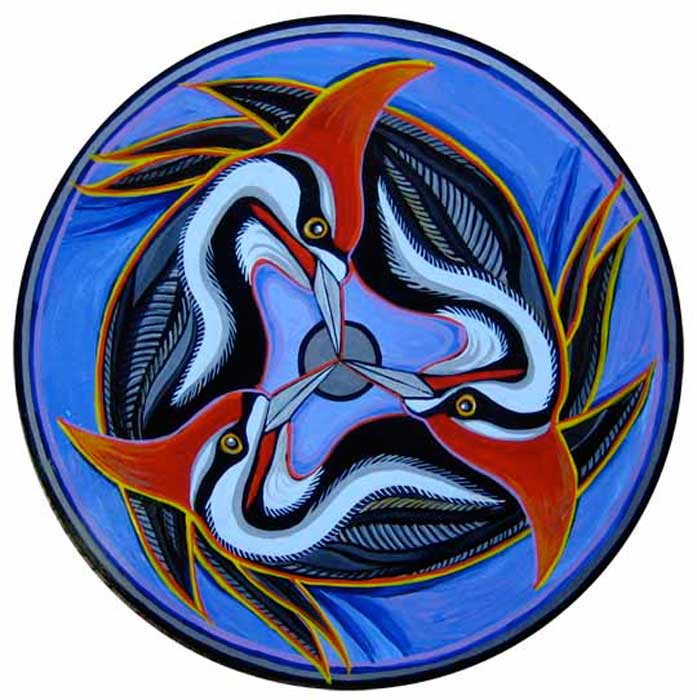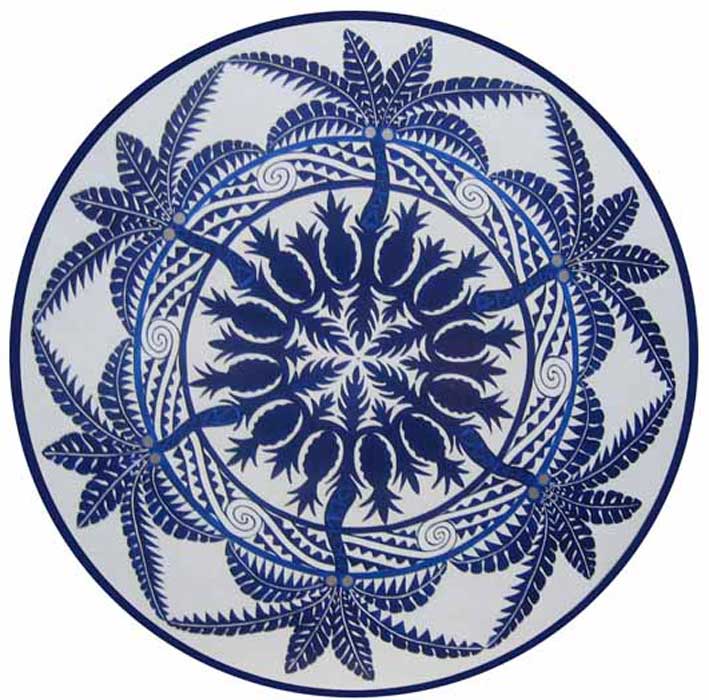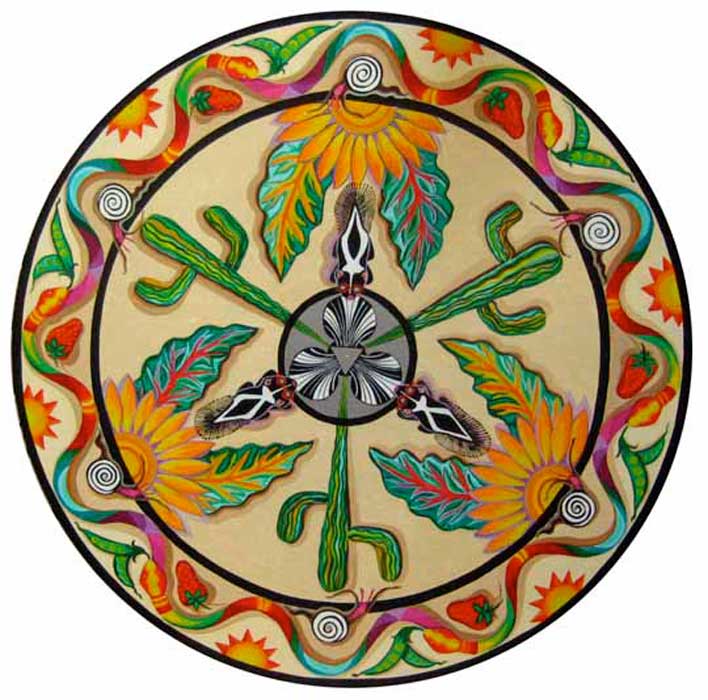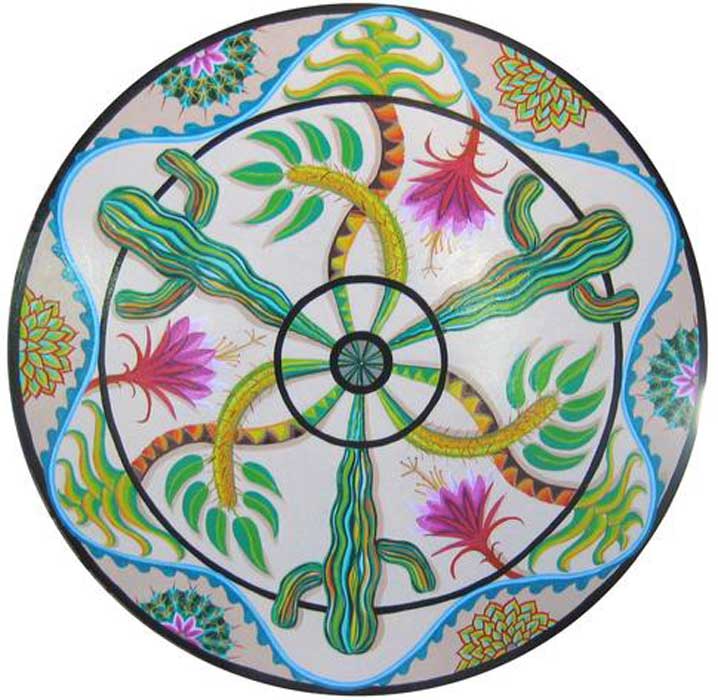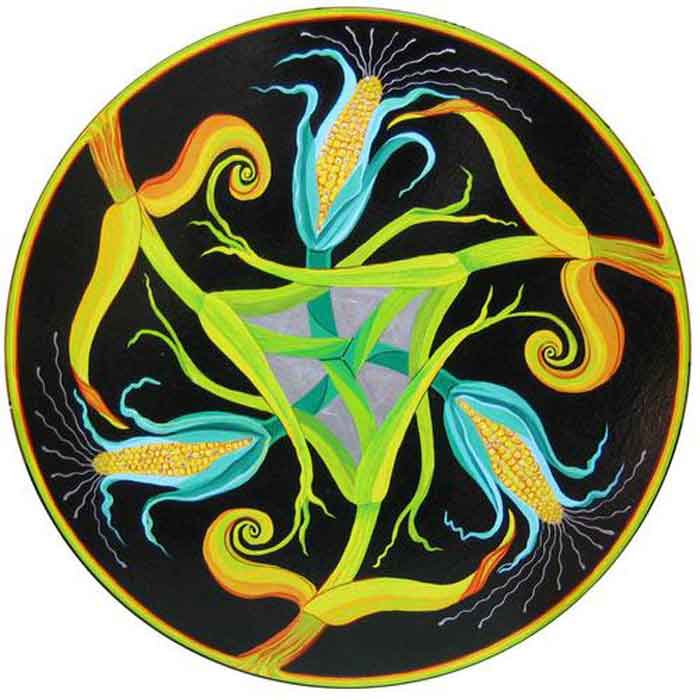Kathy Dennett's Wine Labels
Our first vintage was 1991, a lovely Cabernet blended with a little merlot and Franc. The labels were very simple, with hand printing and a watercolor of our vineyard by Frank Morelli. All labels were applied by hand, using a glue machine and a cleanup rag, a very time-consuming job.
In 1994 I started painting Pennsylvania-Dutch Hex signs. Classic patterns morphed into wild geometric, flora and fauna by 1999 when they first appeared on the new cigar-band cabernet label. That was the “Famous Flying Fish”, known for their silver-foil sunglasses.
We started making the LOLITA Merlot in 2001. Every vintage since then has had hex sign art accompanied by a limerick. It turns out that the limerick was much more difficult to create than the art.
Our current cabernet labels are reminiscent of the Chateau Mouton Rothschild label, with a top art strip that changes with the vintage. Our label art was sourced from Frank Morelli and Elizabeth and Frank Struzzulla.
In addition to painting in the round, I also started painting with oils on canvas. Loosing the rules of symmetry is quite freeing! You may see some pieces of my paintings incorporated into the Syrah, Chardonnay and Cabernet labels.
Kathy's Wine Label Art
The label design process involves selecting 6 or 8 art pieces that I think might work on the label. Then I work with Photoshop to add the art to the label template. If I like what I see, I print the design and attach it to a sample bottle. Anyone who visits the the house or winery is asked their preference. And sometimes I email my mailing-list with the line-up, requesting votes and comments.
It is fun to get everyone involved.
Hex Paintings
Hex signs are folk art in the round. Traditionally they include geometric decorations in the form of stars, rosettes, raindrops and stylized crosses, surrounded by circular borders of rings, scallops or saw teeth. Originally these signs were painted directly on the wood siding of Pennsylvania barns. Today they also exist as portable art painted on discs of wood, Masonite or metal.
Beginning in the 18th century, German-speaking emigrants seeking religious freedom settled on the rich farmland of southeastern Pennsylvania. These Pennsylvania Germans merged the traditional art of their European ancestors with the cultural elements of their new homeland. Their unique form of early American folk art could be found in symbols and motifs on their furniture, quilts, pottery, manuscripts and tombstones. In the mid 19th century examples of their folk art began to appear on fore bays and gable ends of barns in the form of HEX signs (from the term ‘Hexafoos’ in the Pennsylvania German dialect, meaning “witch’s foot”).
Hex signs, although primarily decorative, have been used to designate ethnic regions and identity, and to signify the hopes and wishes of the owners. The painted elements on the signs have specific meanings, such as: drops (rain, crop), 12-pointed star (12 months, wisdom), 5–pointed star (5 senses, luck), 4-pointed star (seasons), rings (eternity), oak leaf (strength), double star (morning star, sun), 6-point rosette (keep away evil), 8-point rosette (tolerance), scalloped edge (fertility) etc.
My mother’s family is from Bethlehem in eastern Pennsylvania, an area known for it’s beautiful old barns and covered bridges decorated with hex signs. As a child, I recall my mother painting many simple circular signs on our chicken coops and out buildings.
I painted my first hex sign in 1993 as a birthday gift for a friend. My signs are all named, signed and numbered. Recently I painted #730! My style ranges from geometric to floral to animal to ethnic and to the totally bizarre!
I paint on half-inch crezone signboard (12”, 18”, 24”, 30”, 48” diameter) and also on French or American oak wine barrel heads (approx. 22” diameter). The paint is an oil-based enamel. For exterior display the signs need to be securely mounted in an area without direct exposure to sun and rain. I recommend several coats of exterior clear coat for these signs.
